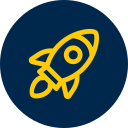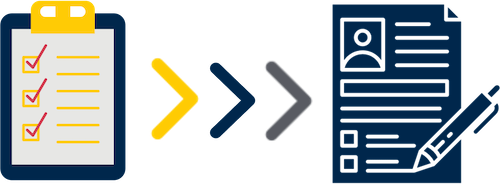You are here
eResearch NextGen: Human Research Application
Project Phases
- Design of the intervention/interaction ("standard") application and IRB review processes
- Design of:
Amendment and renewal processes;
Other application types (e.g., multi-site, exempt, secondary use);
Ancillary processes;
Administrative processes; and
Reporting - eResearch & Data Warehouse build and testing
- Training and supporting documentation development
- Pilot
- Implementation
 After a pause for AAHRPP reaccreditation and COVID-19, the eResearch NextGen project relaunched in June 2022.
After a pause for AAHRPP reaccreditation and COVID-19, the eResearch NextGen project relaunched in June 2022.
Renew your familiarity with the project, its aims, and our progress as U-M streamlines its IRB and ancillary processes, and moves to the next generation of the human research application within eResearch Regulatory Management (eRRM)!
What is the eResearch NextGen project?
The eResearch NextGen project is a cross-campus, collaborative, multiphase project to design and construct the next version of the eResearch human research application (the “HUM”), the IRB review processes, and related business and system processes.
The goal of eResearch NextGen is to optimize the application and processes to provide the best review for the protection of participants in human research by:
- Increasing the efficiency of input by researchers;
- Prioritizing the capture of the regulatory requirements in the human research application for determinations, documentation, oversight, and reporting; and
- Utilizing IT design and updated system features to enhance reporting, increase flexibility, and provide supplemental information to study teams.
 Shifting the Application Process
Shifting the Application Process
The human research application process is shifting to a shorter eResearch application with a required written protocol.
The shorter application focuses on the regulatory and ethical requirements for the best IRB review, limiting redundancy with fewer questions and sections.
Shifting the Ancillary Review Workflow
Ancillary unit (e.g., Research Pharmacy, IBC) processes are being evaluated to align with current business needs in order to facilitate an efficient workflow for IRB review and assist U-M’s compliance with other regulatory requirements.
Project Structure & Status
eResearch NextGen uses an iterative design and review process with multiple working groups that focus on a regulatory requirement, application type or data component, or business process. The working groups are composed of representatives from U-M study teams, U-M IRB offices and boards, ancillary units, the HRPP, and ITS eResearch.
Progress-to-date
The eResearch NextGen project is currently working on Phases 2 and 3.
Completed milestones include:
- Design of a shorter interaction/intervention application type, with key questions in nine sections, including conditional logic to display applicable sections and questions based on data entry and IRB requirements.
- General Study Information
- Sponsor/Support
- Research Activities
- Risks, Benefits, and Populations
- Drugs & Devices
- Laws, Regulations & Standards
- Informed Consent or Assent
- Waivers & Alterations
- Uploads & Links
- Completion of five iterative feedback cycles with stakeholder groups (e.g. study teams, IRB staff and board members, and regulatory offices) to review draft models of the interaction/intervention application and IRB reviewer processes.
- Consolidated reviewer feedback provided by over 40 stakeholder representatives from across U-M, Michigan Medicine and campuses, used to inform the design of IRB application development.
See the eResearch Next Gen Teams webpage for a complete list of eResearch NextGen working groups, their charge, and their status.
Questions?
Have questions about the eResearch NextGen: Human Research Application project? Email the Project Management Team at Next.Gen.PMT@umich.edu.